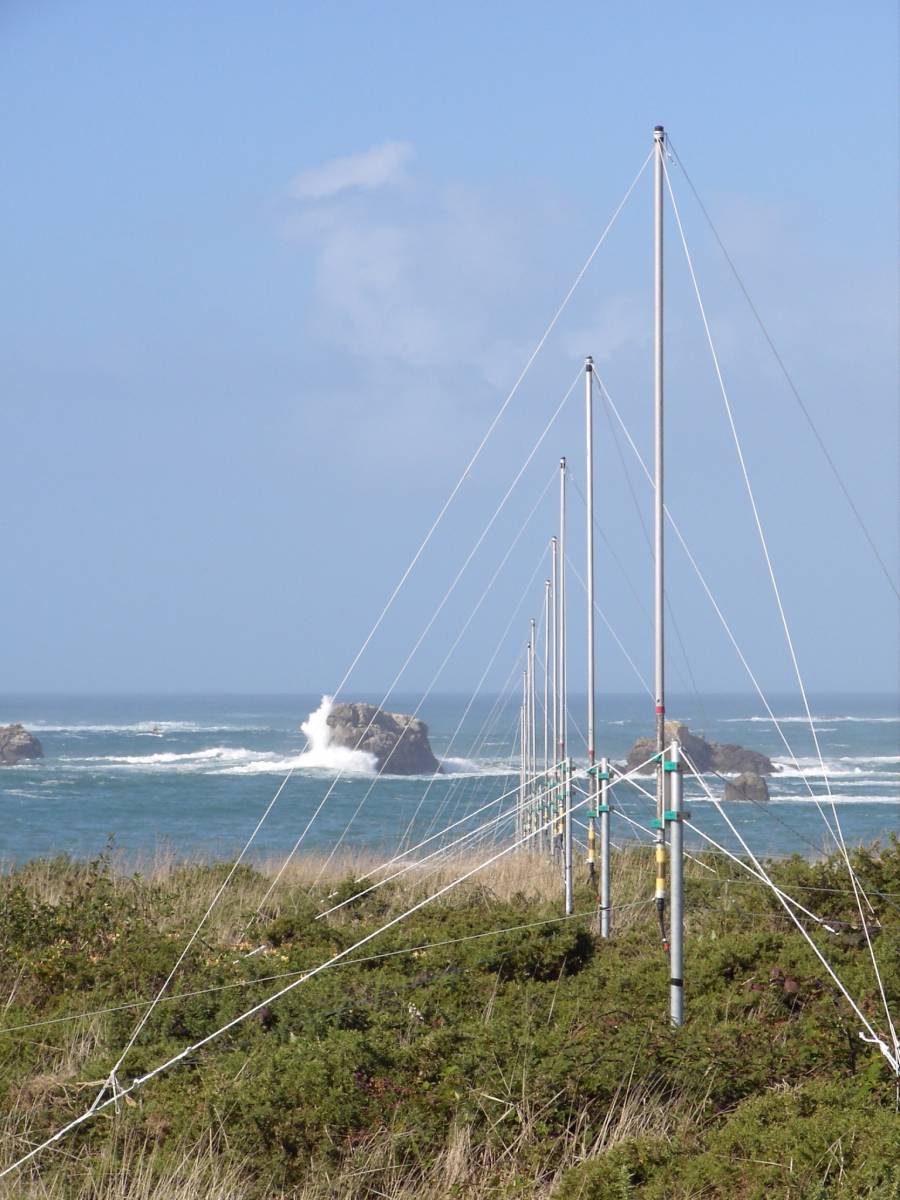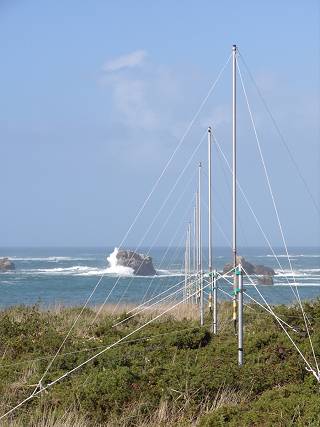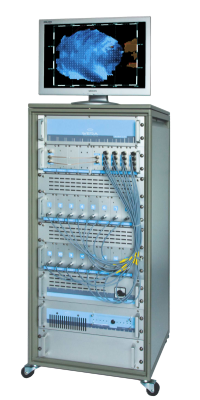Over The Horizon oceanography radar WERA
Description of the radar set, tactical-technical characteristics

Figure 1: A receiver site of OTH oceanography radar WERA in Brest, France (Courtesy of Helzel Messtechnik)

Figure 1: A receiver site of OTH oceanography radar WERA in Brest, France (Courtesy of Helzel Messtechnik)
| Specifications | |
|---|---|
| frequency: | 4 … 48 MHz |
| band width: | 50 … 500 kHz |
| sweep repetition time (PRF): | 2 … 10 Hz |
| average power (CW): | max: 30 W |
| instrumented range: | 15 … 250 km |
| range resolution: | 1,5 km down to 100 m |
| accuracy: | |
| beamwidth: | 3 … 6 degrees |
| display levels: | |
| antenna rotation: | electronically steered |
| MTBCF: | |
| MTTR: | |
Over The Horizon oceanography radar WERA
The WERA system (WavE RAdar) is a shore based remote sensing system to monitor ocean surface currents, waves and wind direction. This long-range, high-resolution monitoring system based on short radio wave radar technology. It uses the principle of FMCW-Radar with very slow sweep period of typically 0.3 sec. The vertical polarised electromagnetic wave is coupled to the conductive ocean surface and will follow the curvature of the earth. This OTH-SW (Over-The-Horizon Surface Wave) oceanography radar can pick up back-scattered signals (Bragg effect) from ranges of up to 200 km.
WERA uses two different antenna sites of easy to install small antenna systems. The transmit antenna array consists of 4 vertical mono-poles. A continuously swept rf-signal is transmitted. The receive antenna array consists of 8 to 16 vertical mono-poles to build a linear array. Software beam forming is used to steer a beam over an angel of about ± 60 degrees. The reflected signal has a frequency offset compared to the actual transmitted signal. This frequency offset is a measure for the distance overlayed with a Doppler frequency.
The system will scan the allocated band to find a free gap for the required sweep bandwidth (“listen before talk”). The center frequency will be adjusted to match the sweep band with the free gap. If the gap is not wide enough, the sweep bandwidth will be reduced, resulting in a coarser range resolution. This frequency selection procedure will be carried out prior to each radar cycle, typically all 10 to 30 minutes.
Fields of Applications:
- Long Range Ship Tracking for Home Land Security
- Vessel Traffic Services for Maritime Safety
- Search and Rescue in Case of Accidents
- Disaster Warning for Tropical Cyclones and Tsunamis
- Coastal Engineering for Offshore Constructions
- Environmental Protection for Coastal Zones

